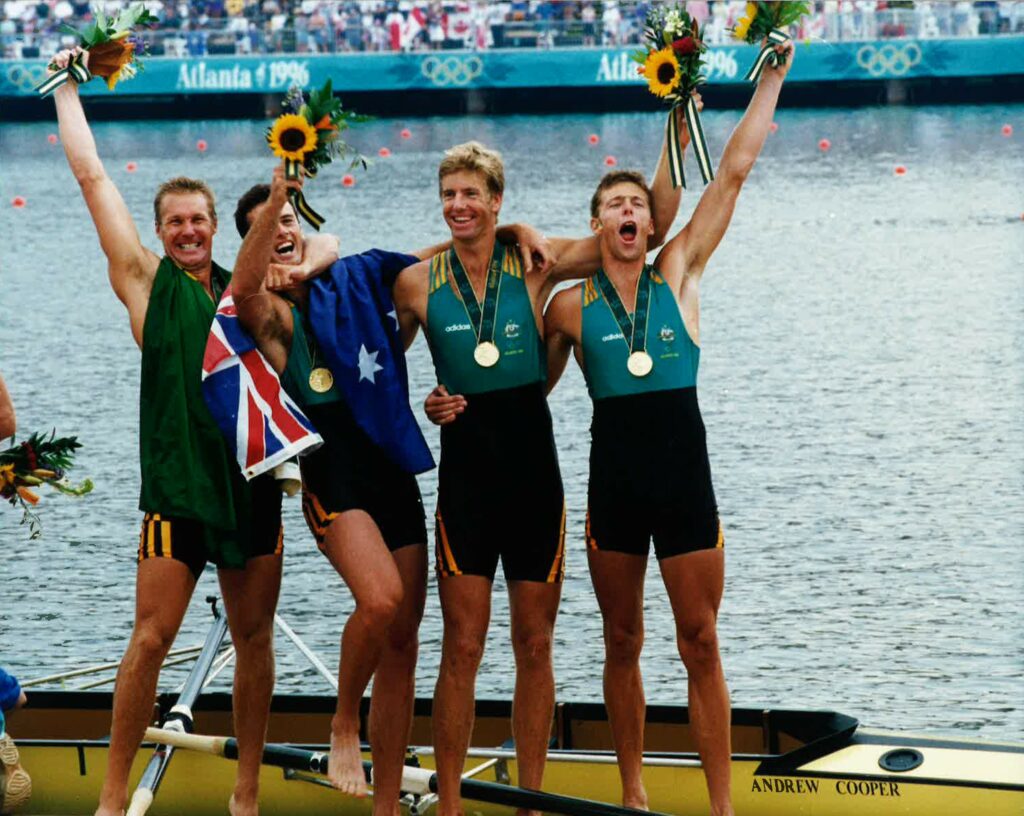
23 Jun 2021
Bringing back the women’s four to Olympic rowing
With a month to go until rowers take to the water in Tokyo, World Rowing takes a look at the new boat at the Games. The women’s four is set to make a triumphant return at the upcoming Olympics after nearly 30 years.
Rise and fall
Finally allowed into the Olympics at Montreal 1976, women’s rowing steadily overcame many hurdles. After Los Angeles 1984, the race course doubled to 2000 metres and the quadruple sculls event changed to a coxless crew. After Seoul 1988, the four also changed to a coxless event.
“It was so much lighter and faster,” recalls Canadian Brenda Taylor, who had raced undefeated in the coxless four for over a year before Barcelona 1992. “I didn’t think too much about it being a new event – perhaps because it replaced the coxed four, so it seemed more like just removing a coxswain than adding an event. I like rowing the straight four way more than the coxed four.”
That Olympic race came down to the wire in an exciting final, showing the women’s four could be one of rowing’s premier events. Yet the inclusion of lightweight races at the Atlanta 1996 Games forced the removal of other events including the women’s four.
“I was really sad,” says Taylor of hearing the news. “It is such a great boat to row and race. It also felt it was a mistake from the perspective of continuing to develop women’s rowing. I felt that the four was and would continue to be a more competitive event than the eight, with a deeper and more diverse field.”
Rise again
A little over two decades later and the four is back on the Olympic programme for Tokyo 2020.
For the return of the women’s four, “There were a number of factors at play,” says Tricia Smith, former Olympic rower, World Rowing vice president and President of the Canadian Olympic Committee. “In the years leading up to the decision on events for Tokyo, a review of the statistics showed, not surprisingly, the women’s four had suffered in terms of numbers of entries when it was dropped as an Olympic event.
“It was not a case, as was argued by some, that there were not enough female sweep rowers so if you reintroduced the four to the Games the eight numbers would suffer. And on top of that, we received pretty clear encouragement from the IOC [International Olympic Committee] that equal numbers male and female, events and athletes, was the goal for Tokyo and that two weight classes in certain events would not be supported.”
The clear message from the IOC, says Smith, was change or be changed. “World Rowing, led by Jean-Christophe [Rolland, World Rowing president] and Matt [Smith, executive director] held dozens of consultation sessions,” says Smith. “Fortunately, the rowing community, in large part, was ready to approve those changes. Women’s rowing has never been stronger.”
Making history
“Yipee!” says Taylor of her reaction when she heard the news of the return of the women’s four. “I was super happy for the reasons above. I love watching fours – men’s and women’s. There have been some classic races (the 2004 men’s four) and crews (the Danish lightweight men’s four, the Aussie “oarsome foursome”, various GB men’s fours).”

“The four without coxswain is a fast, skill event,” says Kay Worthington, a member of Canada’s women’s four that won gold at the Barcelona Olympics. “The eight was faster, but you don’t have to think about anything but put pulling hard. It was great to be in the four because for us, the person stroking was the person steering.”
“The four combines the speed and power of the eight with the technical proficiency of the pair,” adds Taylor. “You have to have quick, clean bladework, precise catches and then let the boat run. You have to row well together – there is no ‘hiding’ in a four the way there sometimes is in an eight. Four people is a perfect crew size – it feels like a crew but without the sometimes more complicated dynamics of an eight.
“Let it run. Be quick, light and precise and then don’t disturb the run. Just relax and let the boat run under you. Let it fly.”

